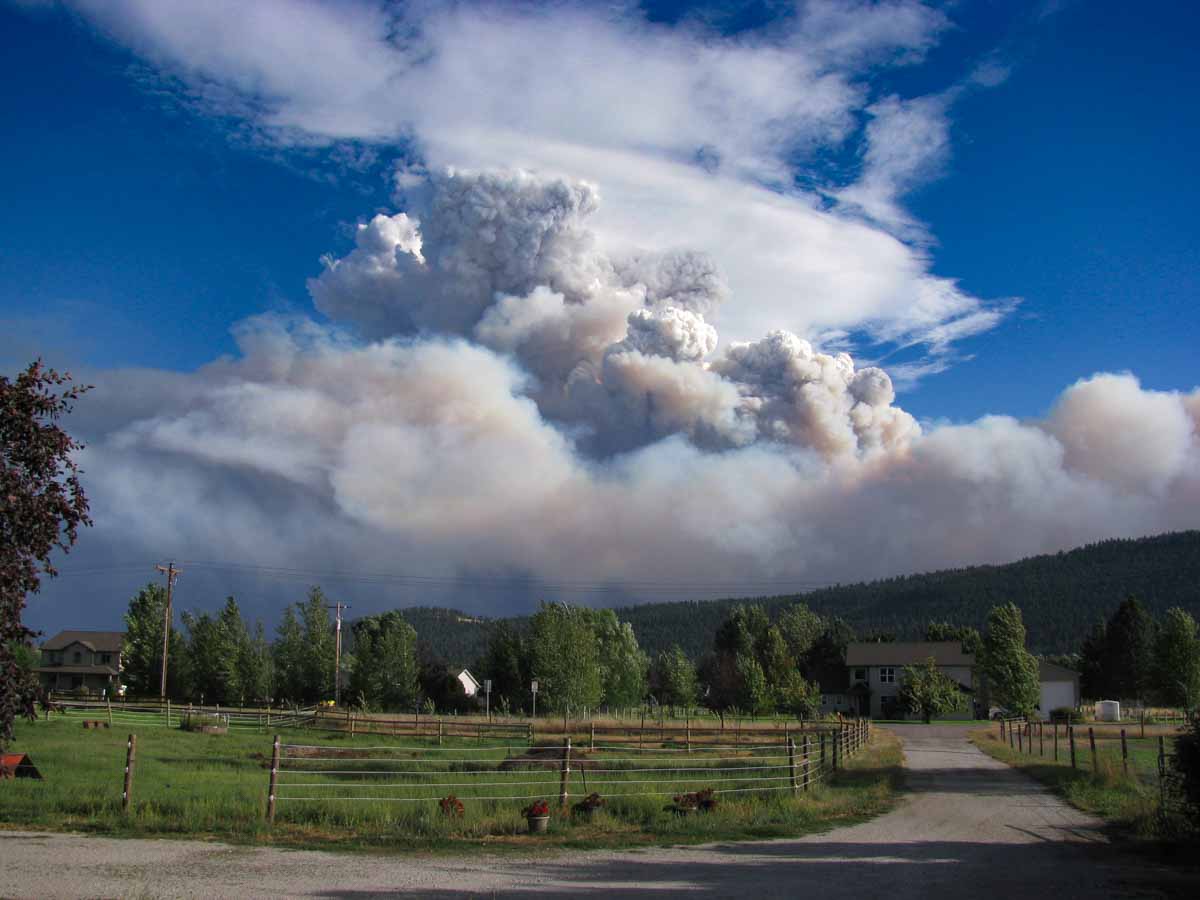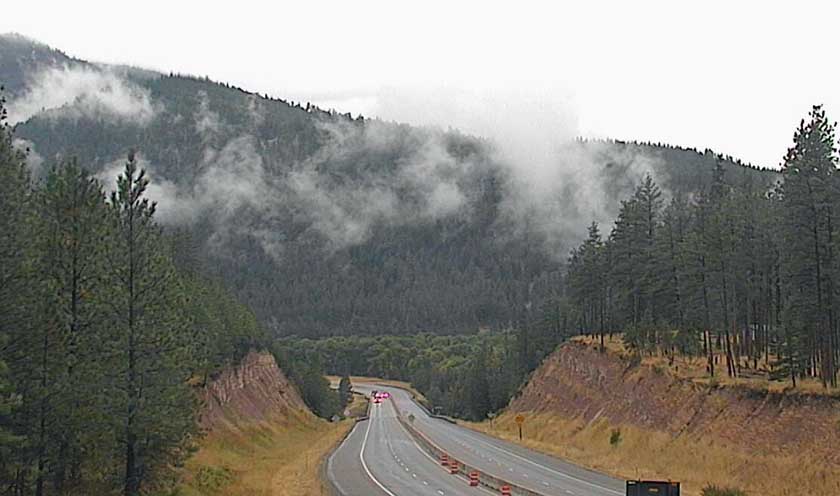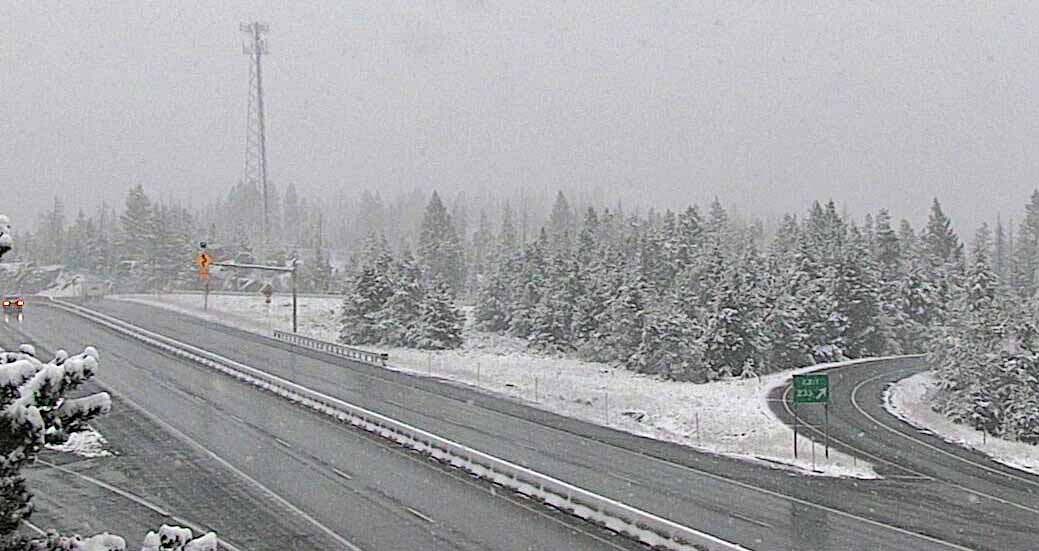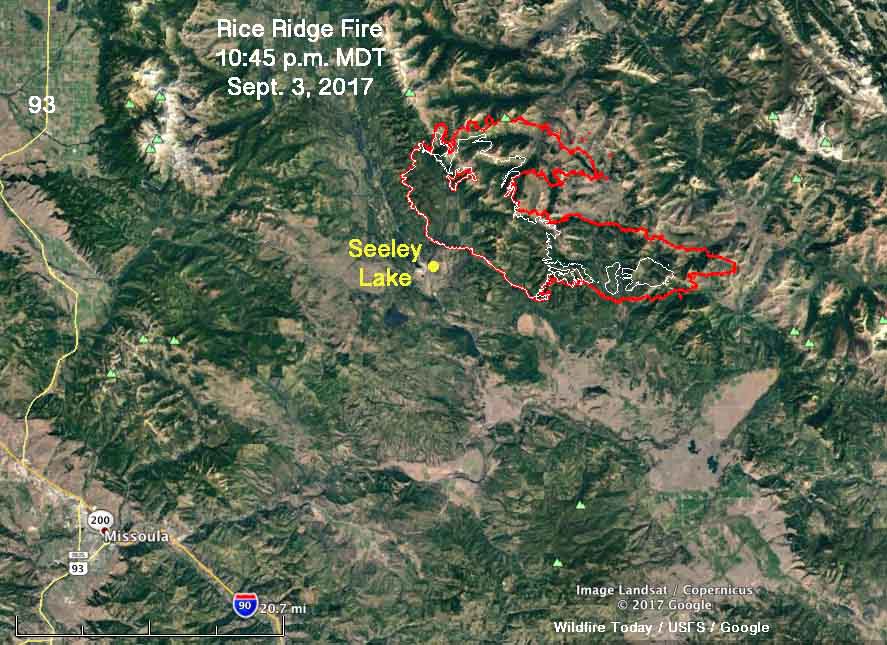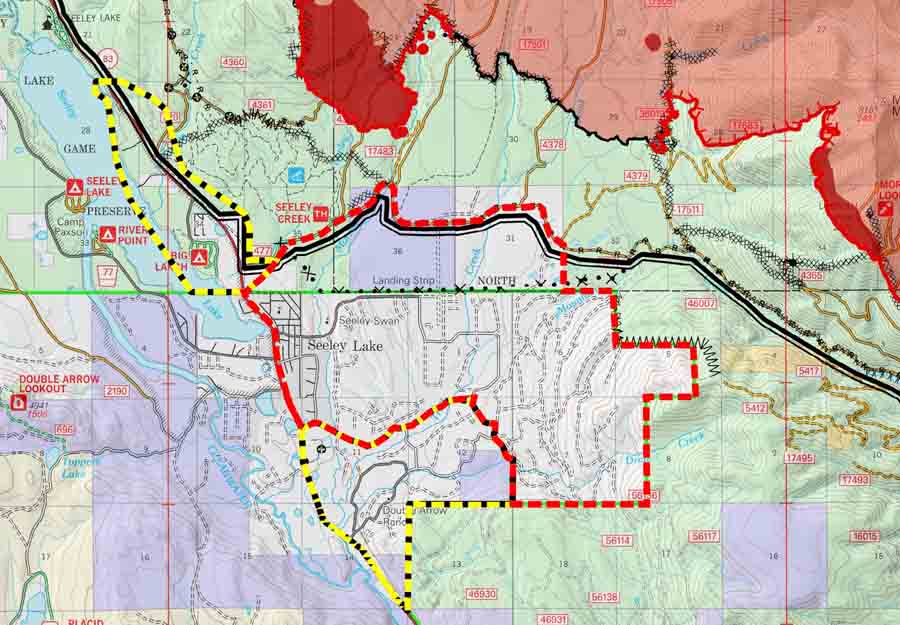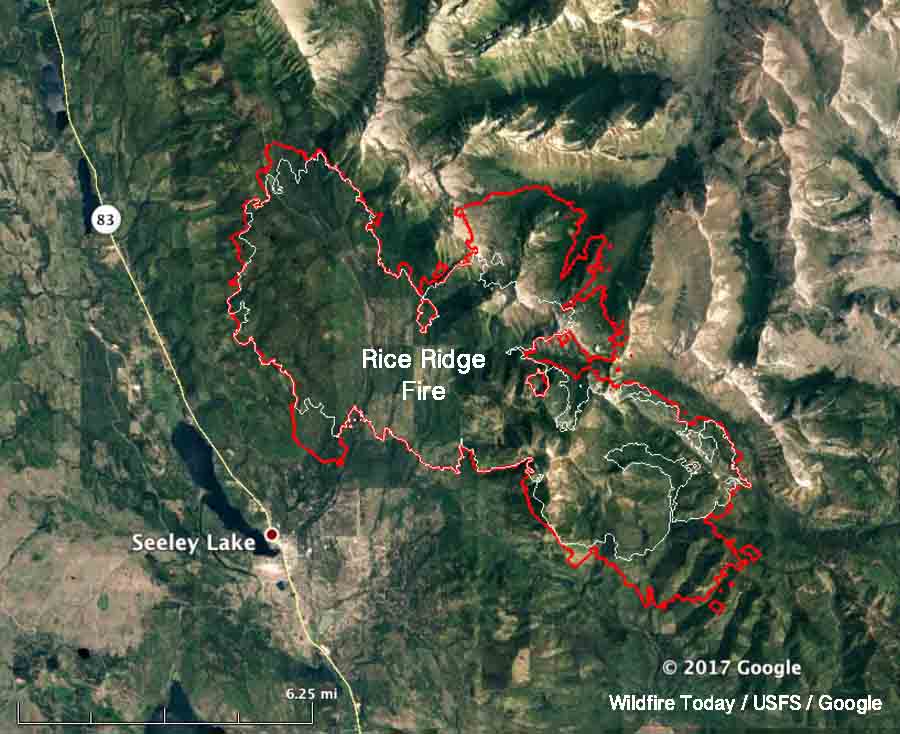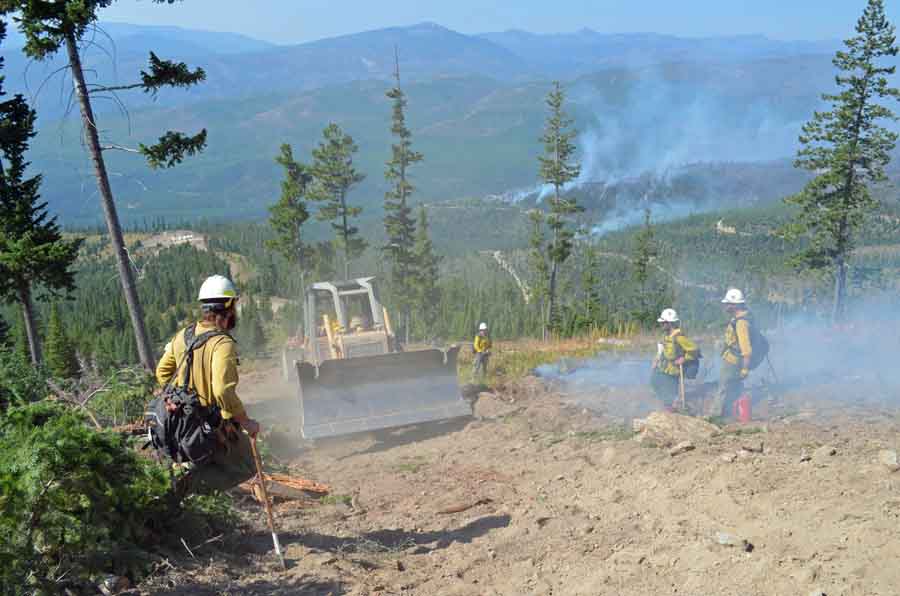The Rice Ridge fire has burned 108,126 acres just east of Seeley Lake 35 miles northeast of Missoula, Montana.
Above: The red line on the map shows the perimeters of the Rice Ridge and Reef Fires at 12:45 a.m. September 5, 2017. The white line was the perimeter of the Rice Ridge Fire about 24 hours before.
(Originally published at 9:18 a.m. MDT September 5, 2017)
On Monday the Rice Ridge Fire grew on the south, east, and north sides adding another 6,701 acres, and has now burned 108,126 acres. It merged at Otis Creek with another fire to the north, the 10,424-acre Reef Fire. Combined, the fires have blackened 118,550 acres, well beyond the 100,000 threshold of becoming a “megafire”.
The spread on Monday was much less than on Sunday when it almost doubled. Numerous spot fires out ahead of the main fire from Sunday’s growth are active on the east side. On the south it spread for about a mile and crossed Cottonwood Lake-Monture Road.
The transition from Thompson’s Type 2 Incident Management Team to Poncin’s Type 1 Incident Management Team occurred at 6 a.m., Tuesday, September 5.
The weather forecast calls for moderate winds with rising temperatures through Friday, but the relative humidity will reach down into the teens each day.
There is not much expectation of rain on the fire this week except for a 20 to 30 percent chance Thursday night and Friday.
Resources assigned include 15 hand crews, 64 engines, and 4 helicopters. The total number of personnel on the fire decreased Monday from 817 to 787.
